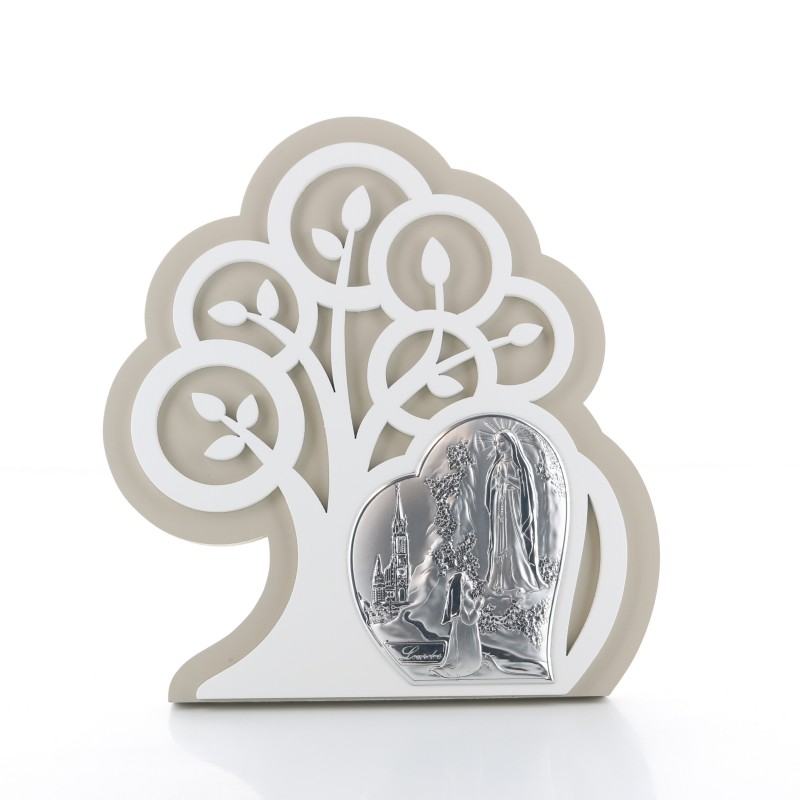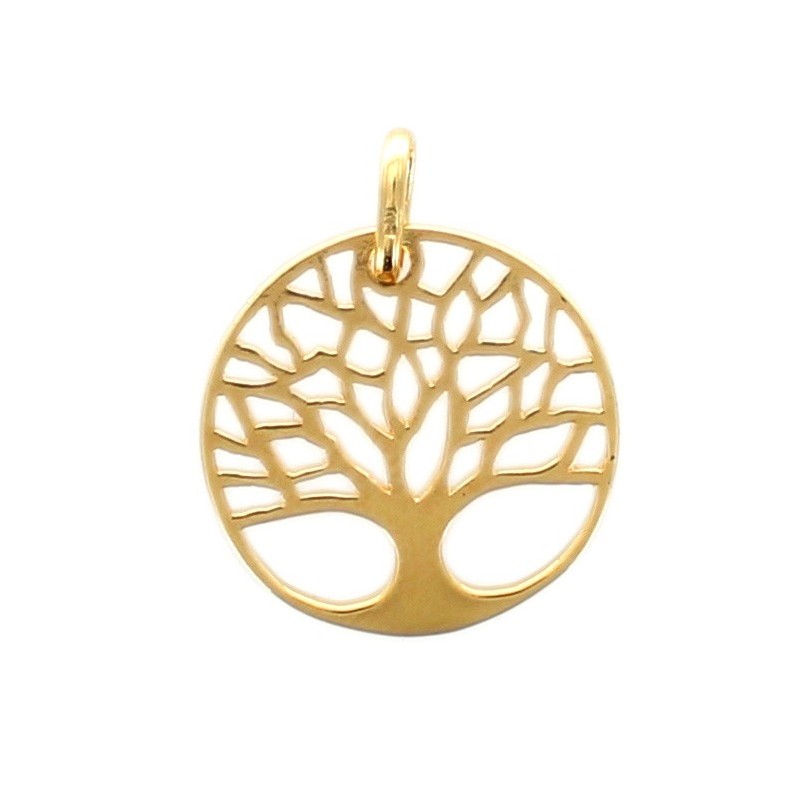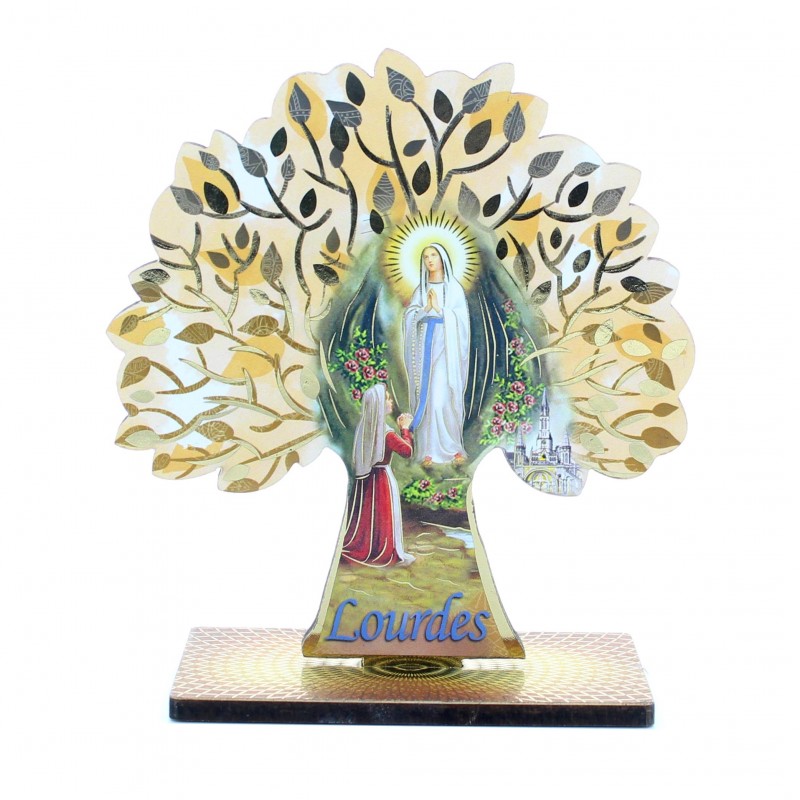Table of contents :
1- The tree of life, an ancient symbol
2- The tree of life in the Bible
3- The special case of the tree of Jesse
4- The tree of life in the cultures of the world
5- The Tree of Life in the Middle Ages
6- Symbolism in the Romanesque period: an ideal medium for the representation of the tree of life
7- From the wood of the cross to the tree of life
8- The concept of the transversal tree of life
9- The return of the symbol of the tree of life
10- The increasing return of the tree as a symbol in our lives
Although the symbol of the tree of life or tree of life is very old, we notice that it is represented more frequently in our daily lives. In the form of jewellery, tattoos or iconographic representations, the symbol of the tree of life appears more and more frequently in our societies. The return of this symbol may be linked to the environmental concerns that increasingly invade our daily lives. However, the success of this representation is also due to the fact that the tree has always been and remains one of the most impressive realisations of nature for our human minds in search of meaning.
In this article, we will discuss this ancient symbol, the special role it played in mediaeval iconography, and the meaning we attribute to it today.
The tree of life: an ancient symbol
Both in the representations of numerous civilisations and in the Bible, the tree of life is an archetype found as far back as prehistoric civilisations.
The tree of life in the Bible
In Genesis, the tree of life appears in the Garden of Eden. It is located next to the tree of the knowledge of good and evil. The tree of life is a gift from God: it is associated with God's love and protection. It gave food and shelter to Adam and Eve.
When the first man and woman chose to taste the fruit of the tree of knowledge, the Lord drove Adam and Eve out of the Garden of Eden to protect the tree of life. This tree would have given them eternal life. This is impossible now that men know evil.
The tree of life is also found in the writings of Revelation: in these texts, the tree is described as a tree of abundance, a final reward in God's paradise.
The special case of the Jesse tree
The tree of Jesse is quite distinct from the tree of life, but iconographically its representation is that of the tree of life.
In the Gospels of Matthew and Luke, we find a long genealogy of Christ spanning several dozen generations. The representation of this filiation naturally took the form of a tree. The tree of Jesse is thus found in many Christian representations.
The tree of life in world cultures
Not surprisingly, the tree of life is not only a Christian symbol.
This fascinating, living and seemingly unchanging being is the link between heaven and earth. It dominates man from all heights, nourishes and protects him and has always enabled him to build the tools necessary for his survival.
In the representations of the Assyrian, Egyptian, Mayan or Celtic civilisations, the tree of life is, depending on the culture, the pillar of the world, the central axis uniting heaven and earth or the world tree. From the roots to the tips of the highest leaves, the tree by its very nature speaks to man, always in search of meaning and symbols.
The Egyptian world tree is the pillar of the world and supports the vault of heaven with its branches.
The Maya, a pre-Columbian culture, also represented the world tree that connected heaven, earth and the underworld. According to the Maya, this tree began to grow at the moment of the creation of the world. The world emerged from the tree in four directions: north, south, east and west. In the Mayan tree of life, there is a cross in the centre representing the source of all creation.
In the Kabbalah of the Jewish religion, the tree of life is associated with a very strong and complex symbolism.
Among the Celts, it is referred to as the world tree, for them each tree is the ancestor of a human being. It is the most powerful representation of the forces of nature and the harmony that unites them.

Silver frame of the Tree of Life with the Apparition of Lourdes 28,90€

Gold plated Tree of Life Pendant 18 mm 19,90€

Tree of Life and Lourdes Apparition Framework 4,95€
The tree of life in the Middle Ages
Symbolism in the Romanesque period: an ideal medium for the representation of the tree of life
Who has never looked at the tympanum of a Romanesque church or a medieval miniature from a parchment? All the mysterious details depicted by period miniaturists and sculptors are sometimes a real object of fascination.
Largely inspired by the Benedictines, symbolism in the Middle Ages (and even more so in the Romanesque period) was intended to communicate with the illiterate people. Even today, the strange bestiary of these animals carved in stone is a source of wonderment. These chimeras and strange characters were always accompanied by plant decoration.
It is in this context that we observe in our churches more and more representations of the tree of the cross of life.
The wood of the cross
The wood of the cross used by the Romans for crucifixions was a despised wood. It was not a noble species, but a common one, usually pine. It was not a tree that bore fruit, it was a wood of death, as men were bound to it to die. The wood of crucifixions was a barren wood instead of a life-giving wood. The resurrection makes the wood of the cross noble.
The concept of the transverse tree of life
When Adam and Eve tasted the fruit of the tree of the knowledge of good and evil, the tree of life was forbidden to them. This explains the disorder of mankind. The cross of the crucifixion, with its wood, with its verticality, re-establishes the link between earth and heaven, between men and God. This idea is reflected in the representation of the cross-tree of life often found in Romanesque churches between the 11th and 13th centuries.
example of illustration to be added
The Holy Cross of Jesus is the new tree of life that unites heaven and earth. That is why, in the Middle Ages, there were many representations of this cross of Christ vegetalised and adorned with all sorts of plant additions.
This new representation finally invites us to be fruit-bearing trees ourselves, transmitters of a rich and nourishing life for ourselves and our community.
Later, from the 13th century until the 20th century, we return to much more representative images of Jesus' crucifixion. The shift from the cross-tree of life to the crucifix showing Jesus in pain, in suffering, in the rejection of the sins of humanity, takes precedence over the cross as a symbol of life and of the bonds between man and God.
The return of the symbol of the tree of life
The tree as a symbol in our life
In our time, the tree of life has regained its meaning: that of a symbol of rebirth, of departure or new beginning, of openness to a new life.
Let us simply consider the Christmas tree that accompanies us every year. For older civilisations, such as the Celts or the Greeks, it was associated with hope, new life and fertility. The symbol of the Christmas tree on 24 December, the winter solstice, takes on its full meaning with the hope of rebirth in the new year.
Finally, today we cannot remain insensitive to all the environmental issues that preoccupy our society. One of the solutions proposed by scientists to combat global warming is to plant more trees to purify the air on our planet.
Why give a tree of life?
As we have seen, the tree of life transcends time. It has always had a symbolic and universal value. It is a source of elevation and growth on both a spiritual and physical level. It symbolises protection, rebirth and eternal life.
Precisely for this reason, a tree of life in the form of a jewel or representation is the ideal gift for a baptism, communion, profession of faith or any symbolic moment in the life of a loved one.
You will find our articles ...
Prayer on the Tree of Life
Lord, we thank you for your creation, for the tree of life which symbolises life, growth and nourishment.
We thank you for the life that comes from you, for the life you give to all things.
We pray that this tree of life will be a reminder to us of your presence in all things, that we may be nourished by your presence in our daily lives.
Help us to be attentive to the signs of your presence in our lives, so that we may live in harmony with your creation.
We pray that we may be stewards of your creation, that we may care for the earth and all the living creatures that inhabit it.
We entrust to you all those in need, that they may be nourished physically and spiritually by your presence.
Amen



 The Mystery of the Five Wounds of Christ: A Profound Exploration of Their Spiri
The Mystery of the Five Wounds of Christ: A Profound Exploration of Their Spiri  Women's religious orders: A heritage of service and education
Women's religious orders: A heritage of service and education  What is Secours Catholique?
What is Secours Catholique?  Jesus' 40 Days in the Desert: A Spiritual Exploration
Jesus' 40 Days in the Desert: A Spiritual Exploration  In un mondo di connessioni costanti e distrazioni digitali, la Quaresima si sta
In un mondo di connessioni costanti e distrazioni digitali, la Quaresima si sta